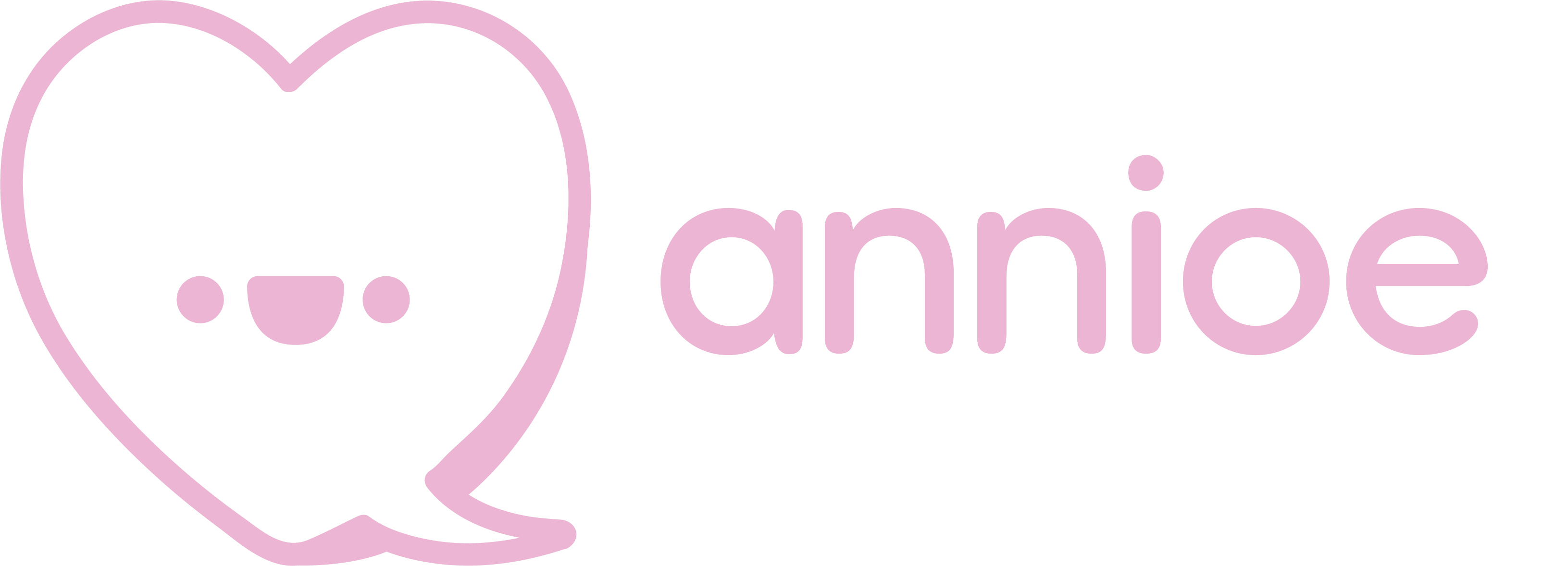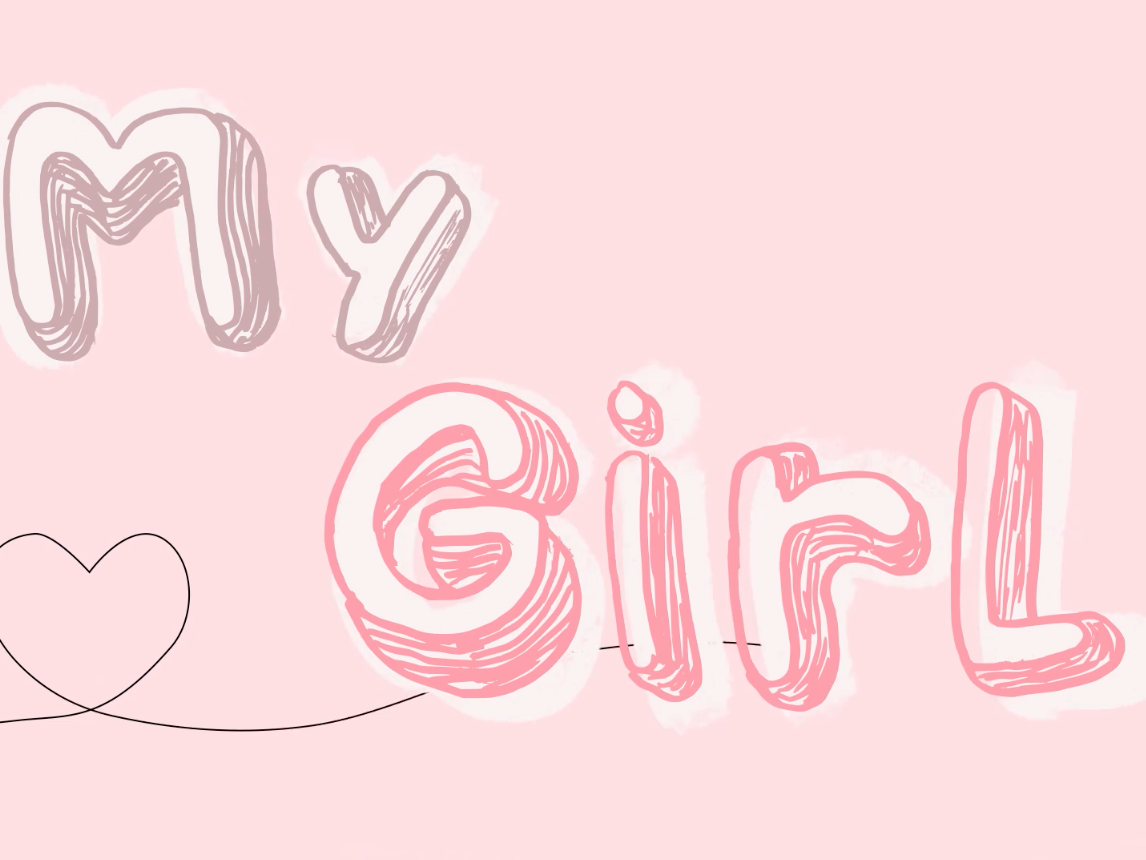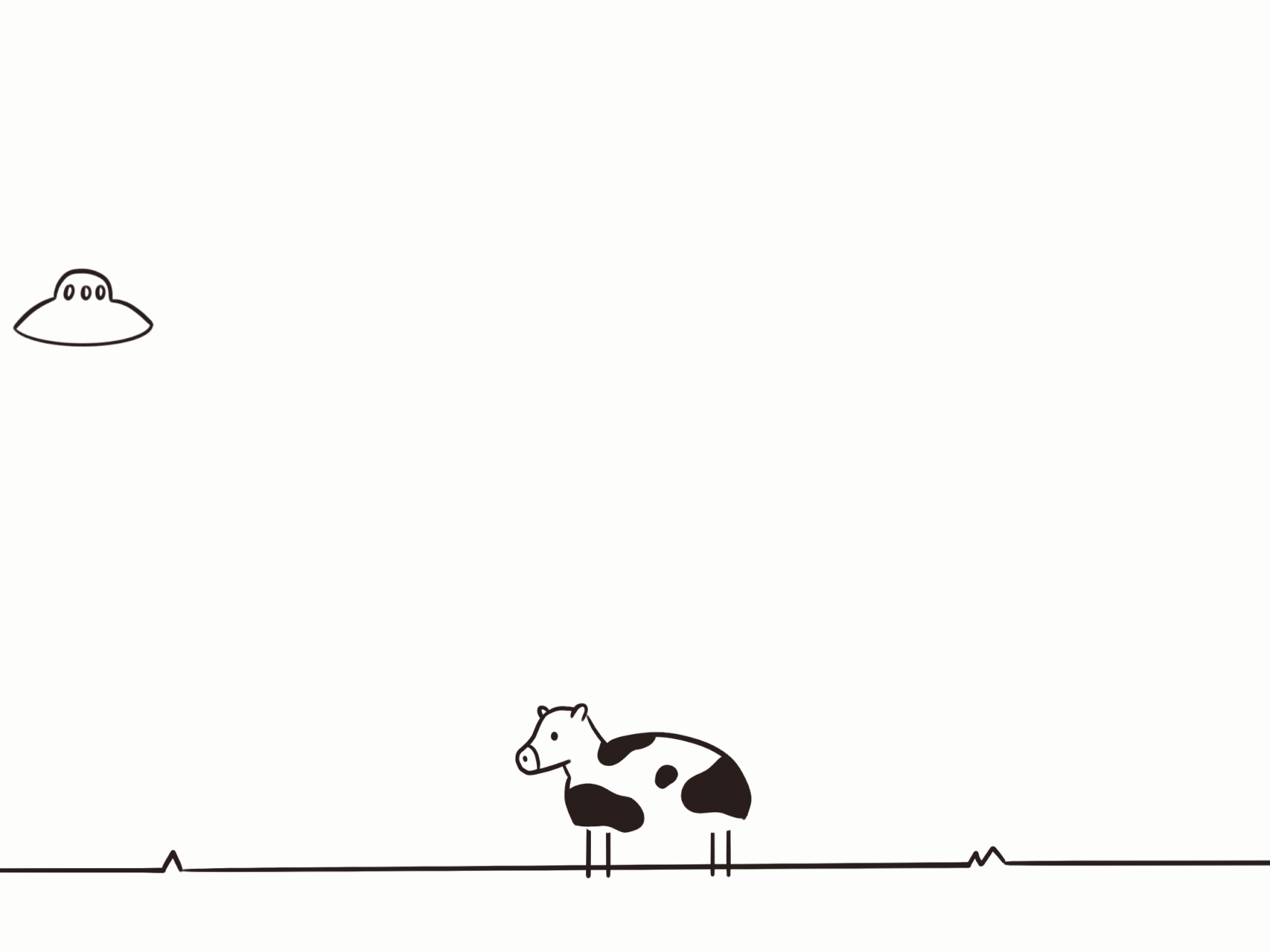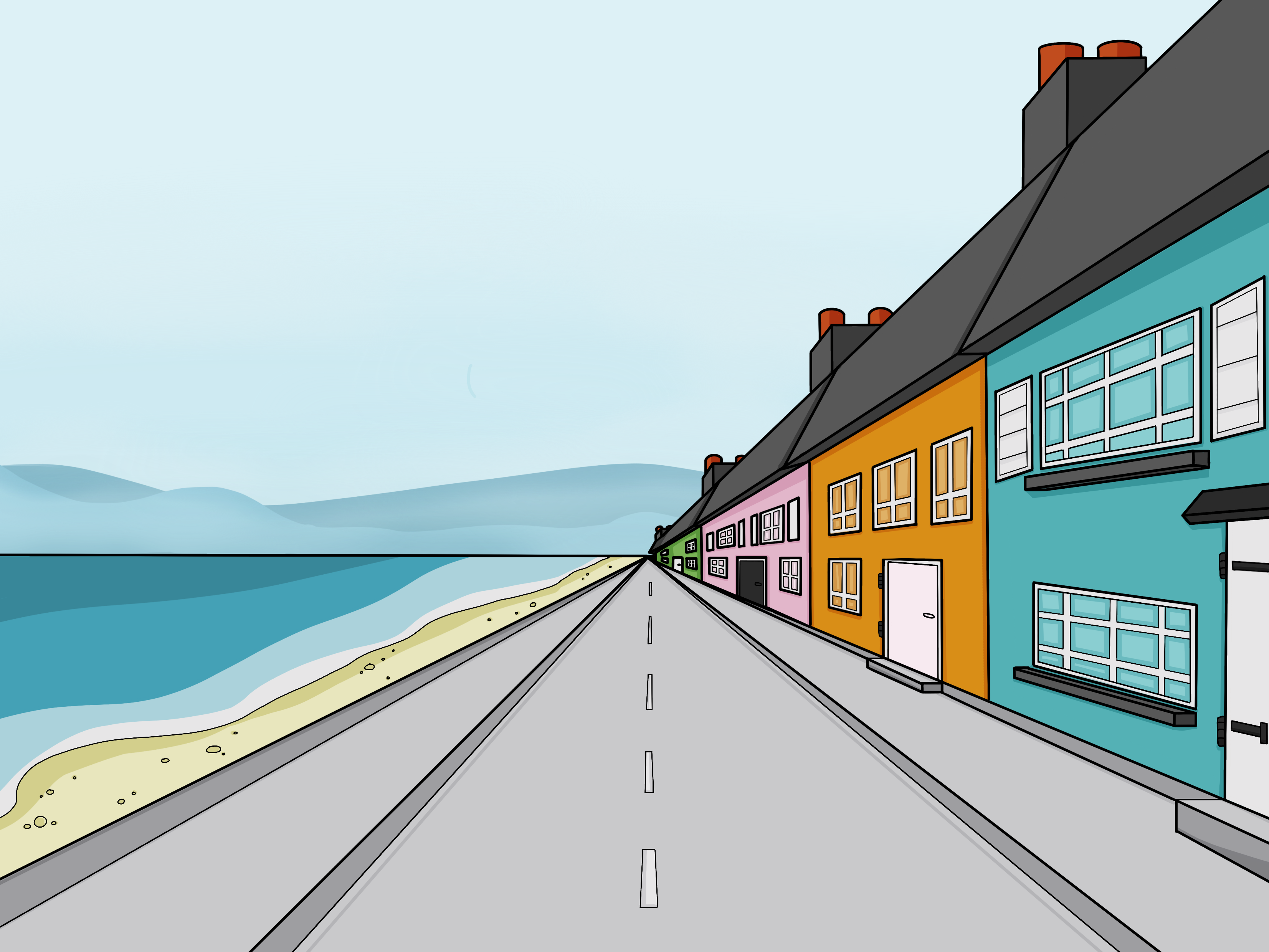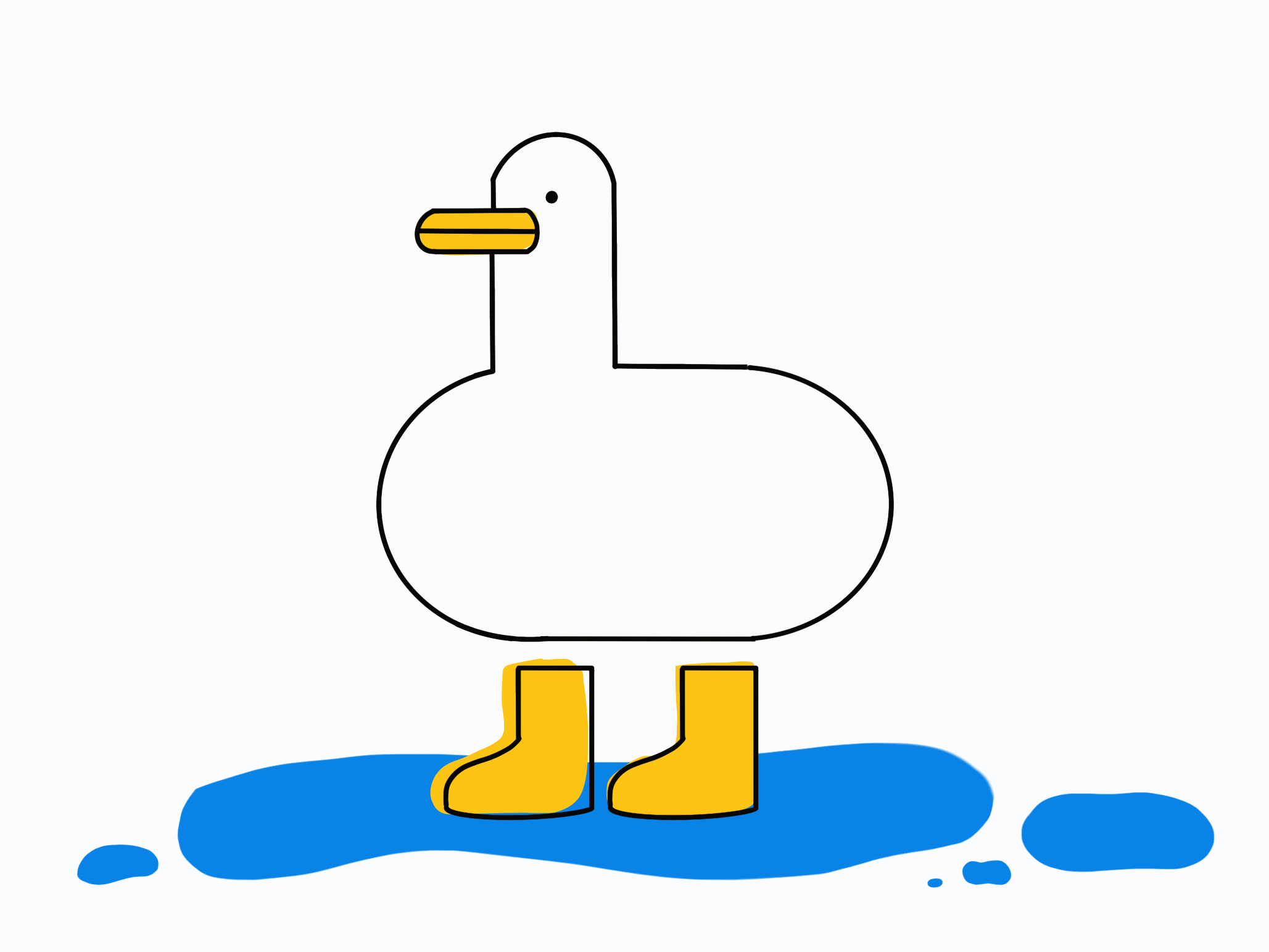Activity 1: Shapes
Ideas and Concepts
The brief for the first week was to create a short animation based on modern motion design. The main aspect we had to consider was shape and experimenting with Adobe After Effects (AE). Because this was an introductory week, many of the provided examples used geometry such as circles, squares and triangles to execute clean, minimalist transitions and movement.
My first idea was the logo I designed for the Woolworths Centre for Childhood Nutrition Research. This image immediately popped into my head because when I was designing this logo, I was thinking about how it look as an animated version.
As seen above, I took heavy inspiration from the colour scheme, shape and overall design features (such as outline stroke and the flat design style). The original idea was that the droplet shapes rotated and fanned out into the circle. This inspired the original concept storyboarded.
As I have had prior experience with AE, I wanted to demonstrate movement in scale and position. Additional transition animations emerged after watching the video, Circle - Motion Ident by Peter Northcott. Specifically, the diagonal line transition and the pie-chart like rotating transition. Otherwise, all other decisions were improvised and altered as the animation progressed.
Many of the progress afterwards was trail and error. I played around with the sequence of animations and which animations to incorporate. I made sure to ease in and out of transitions to create cohesion throughout the full duration.
To add audio to the animation, I experimented with using plucked string instruments. This instrumental timbre best emulated the calming, natural mood the animation gave off. I began by experimenting with violin, however, the higher timbre and range made the zooms and movements appear more threatening and stark. I asked one of my friends if they could provide these sound effects on cello, for a more mellow and welcoming sound.
After receiving feedback for my original animation, a few more details were added for more unique stylisation. The main ask was the incorporate little doodles or sparks that appeared when the cello was plucked. Not only did this add more nuance, but also added an element of surprise.
References
Northcott, P. (2011). Circle - Motion Ident. Vimeo. https://vimeo.com/23236621
Activity 2: Typography
This week, the brief asked that we experimented with type. This included we use typographic elements such as font, kerning and movement of letters but also using more advanced features such as text animate, parenting and layer effects. These combined will create symbolism and emotion from the words, presenting a nuanced project outcome.
I began with inspiration. In class, demonstrations of the Stranger Things title sequence and the other moving text was taught. Techniques such as individual letters moving and animating with adjustment layers was introduced. I wanted to combine some of these newly taught techniques into a simple and clean animation.
This would demonstrate anchor point, rotation and position. I'm using the typeface 'Cooper Std'. This serif font appears commonly Instagram posts as a title. It's quite round and legible. It also isn't a thin typeface, helping readability.
I tried adding effects onto the text to add texture. I tried adding a glow, a light beam and other effects but it made the text harder to read and distinguish. I ended up liquifying the text at the beginning, to practise making the text more of a symbol than words. Additionally, the liquifying animation made it appear like clouds.



To make the visuals more interesting, I created a background in Adobe Illustrator. This gradient method is very popular on Instagram infographics. It features a peaceful, calming feel. This would be perfect for symbolising clouds.
When animating the drop, I changed the dropping letter "d" to the letter "u". This would demonstrate rotations on an anchor point. I changed the sentence to 'cloud nine' too as it would also make more sense.
When making the 'u' drop, I decided to move the other letters instead of just the 'u.' In honesty, this is because I was facing issue when parenting the individual letters to a null object. While reflecting upon this, I wish I had used a null object layer to transition the 'n' downward, to emulate it falling. Originally, the letter disappeared at different paces, but with some editing it was fixed. The 'n' fell and rotated 180° to simulate the letter 'n'. It resolves into "nine" and fades away, like clouds would.
The clouds was positioned in 3D, to allow for parallax when the composition moved. The opacity was turned to 70% to make them seem less intrusive and allow the text to fall through the clouds. The timing of the movement had to be readjusted multiple times to accomodate the cloud animations. Overall, I'm quite proud of the composition, however, I do wish the timing would be more resolved.



Activity 3: Infographics
This week's motion design is tackling infographics. The necessity of motion design for infographics is to easily communicate information. By adding a visual moving element, it engages the viewer more easily than static mediums.
Research on infographics; I took inspiration from Infographic Quotes by Patrick Clair. The use of scrolling text helped guide the audio information. The addition of the camera movement helped apply focus to specific information. The use of symbolic imagery assisted the consummation of information, as images are processed faster than words. To manipulate this in my own motion animation, I can use specific imagery to accompany the text.
Additional inspiration came from Instagram infographics. Many of these infographics use very plain, minimalist style. These 'aesthetic' posts display a soft gradient background with very little text. Typically, they display an inspirational quote using either a stylised serif typeface or a san-serif one. This very feminine appealing style would fit perfectly for my chosen quote.
"Grauerholz and King [1997] conducted a content analysis of 48 hours of prime time TV programs and found that 84% of the shows contained at least one incident of sexual harassment." - (Galdi S et al., 2014)
When inputting this quote into a "text to speech" program, it was approximately 10 seconds long, perfect for the experiment. This line could incorporate symbolism for the TV, display a passage of time and a statistic of 84%.
When inputting this quote into a "text to speech" program, it was approximately 10 seconds long, perfect for the experiment. This line could incorporate symbolism for the TV, display a passage of time and a statistic of 84%.


Using the theme from the campaign, it includes a purple and yellow colour scheme. The typeface used is Avenir Next for clear readability. The important information is bolded while the rest is left medium.
I wanted to use composition movements to demonstrate my learned skills. This would also work with the readability of text and minimising the amount of information on screen. This would make the information easily consumable.
The addition of blinking eyes was added during this period. When the text moved, it might have been too fast to read. By adding a symbol such as eyes, it'll convey the information more efficiently. The blinking added movement to allow for a fade in and out.
To add another symbol, the anchor point was moved to the bottom of the screen, turning 90°. I did a similar transition from week 1 to the clock, rotating clockwise. The arms of the clock also rotate from the clock's anchor point.
To continue the transition to a television icon, I wanted the words to continue moving. I made the words follow a quarter circle path to save space and follow the clock icon.
I ran into some trouble when creating another compositional transition. When the composition traveled right, the rotation of the clock was cut off. This was because the radial transition on the clock's frame wasn't linked to a null object. This was fixed by adding a set of keyframes that followed the composition's shift.
The text that appeared after the "48 hours" used a fading in and out transition. This was optimally used to fluidly read and appear when said by the audio.
The composition zooms out to reveal it being on a TV. Because it wasn't perfectly aligned in the middle, the anchor point zoomed out in the incorrect spot. This also messed with the rest of the video as all the null objects had been linked to each other. This took some troubleshooting to fix, going through multiple layers and discovering how to align the TV with the text.
When demonstrating statistics, I wanted to use a graph to better visualise information. Repurposing the clock circle into a pie chart was an idea implemented after discovering how hard it was to transition out the circle. I attempted to transition the clock hands into the pie chart. The radial wipe transition again was used and had a completion of 84% like in the statistic.







References
Bunakova, T. (n.d.). Instagram Aesthetic Quote Collection [Illustration]. Pinterest. https://www.pinterest.com.au/pin/100838479147945181/
Clair, P. (2010). Infographic Quotes. Vimeo. https://vimeo.com/12013143
Galdi, S., Maass, A., & Cadinu, M. (2014). Objectifying Media: Their Effect on Gender Role Norms and Sexual Harassment of Women. Psychology of Women Quarterly, 38(3), 398–413. https://doi.org/10.1177/0361684313515185
Activity 4: Characters
This week, we're focusing on doing character-driven motion design. This is achieved by the abstraction of shape and form, to create life and action. This explores effects like character rigging and animation principles like squashing and anticipation. These principles can be utilised to exaggerate human actions (to look more 'animated') but the fluidity also makes actions look realistic.
I was inspired by an Instagram account called @deekaymotion who focuses on character design in After Effects. They are most known for a series of different character walk cycles. The flat design in the video has inspired me with my own style. Below is a video tutorial of the animator's character creating an animation of their own.
What fascinated me about character design the most is the face and expressions. Being able to manipulate the eyes, eyebrows and mouth to showcase different and contrasting emotions is what drew me in the most as an artist. I wanted to communicate this interest into my motion design. Analysing facial features for their shape, distance, angle (and etc.) helps define unique and interesting emotions.
The storyboard above explores a multitude of different emotions. The different emotions on display would help diversify the animation, finding unique ways to distinguish each emotion. Additionally, it would be interesting to tell a story through how the emotions transition between each other.
Firstly, the character's head model was made using shapes in After Effects. This would later help in manipulating the individual features such as the eyes and the hair. The eyes were pre-composed to keep their shape and place on the head. This was to also to help continuity of movements such as blinking throughout the animation. These were also parented to a null.
To better express emotions, symbolism was used. Symbols such as an exclamation mark, sweat droplet and love heart were used to emote being frightened, embarrassment and flirting respectively. These emotions were further accompanied by the appropriate head movements.
For 'alert', the use of an exclamation mark signified being frightened. The eyes and head were scaled up. When easing, the head then immediately scaled down in size. The quick movement of the head enlarging and then shrinking resembled shock and backing away. When in the graph editor, the toggles were changed to make the scale be faster at the largest scale point, and ease slower when backing away. The anticipation helped express the quick, frightened shock the character had experienced.
To portray the next emotion, the sweat droplet was added. This symbolically is used to represent embarrassment or cringe. The sweat drops down the face while following the head's motion. The head nods downwards, almost in a sigh of relief. To further push this, the whites of the eyes move independently. They avoid eye contact with the viewer, further pushing the embarrassing feeling the character is experiencing.
To emulate the saddened embarrassment; the eyes were masked downward to look like 'eyebrows' were moving downward. This particular eye-shape and downwardly curved eye brows features prominently on upset or 'cringing' faces. The mask moved to cover the tops of the eyes. This was used instead of vertically scaling them down, as this shape would be help for a few seconds. If squished down, it wouldn't produce the same effect.
When transitioning between each emotion, there was a very small gap in which the face got to rest. This was to always provide a fluid, constant motion, similar to real life. These smaller motions of the head rotating or moving slightly also helped ease in and out of the next big action.
The transition between the open eye and the winky face brought some challenges. The timing of the eye closing and the wink appear had to be frame perfect, as the eye might have looked out of place otherwise. If the round eye remained open for too long, the winking eye would overlap it. The winking eye couldn't transition in or out as it would abstract the round eye. The solution was just to overlap the circle eye when it was in the correct position for the wink eye to overlap it.
When easing in this animation, everything has been set to easy ease. These are to follow the animation principle of timing and spacing. To avoid linear movements (which can be seen as robotic and stiff), everything has been eased. However, each edited ease is different depending on the action. Some actions require faster reaction times while other create suspense. For the crying emotion, the *sniff* was sharp. The easing then reflected this, slowly building anticipation and then drastically accelerating. Then it quickly decelerated to smooth out the action.
I enjoy my animations having an entrance and exit. Created an adjustment layer to move right to the middle, as if the head ran in. The head then exits off to the left, creating a perfect loop.








After receiving feedback, the crying emotion was described as not dramatic enough. The idea then was to close the eyes and have tears coming out of the sides. This would exaggerate the emotion and continue movement throughout that emotion's duration. The addition of sound was also incorporated to add more personality and realism.
References
bluez3619995. (2020). Facial Expressions [Illustration]. Twitter. https://twitter.com/bluez3619995/status/1274276541522784257
Deekay Kwon. (2020). Animator Creating Animation (Behind The Scene). YouTube. https://www.youtube.com/watch?v=bGuViPVwx9g&ab_channel=DeeKayKwon
Activity 5: Illustrative
